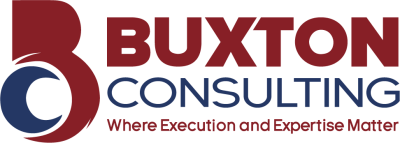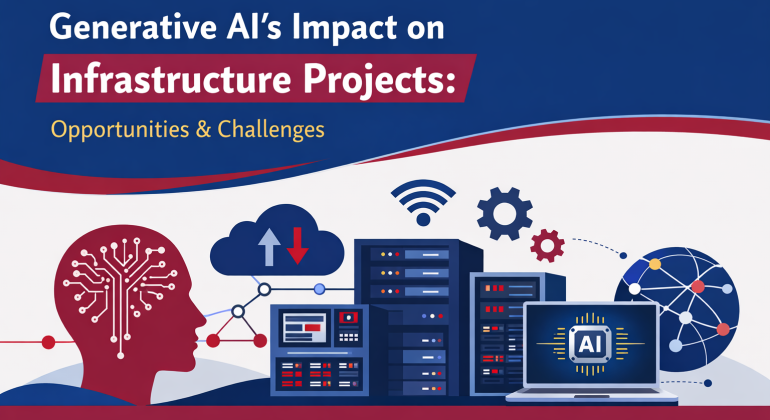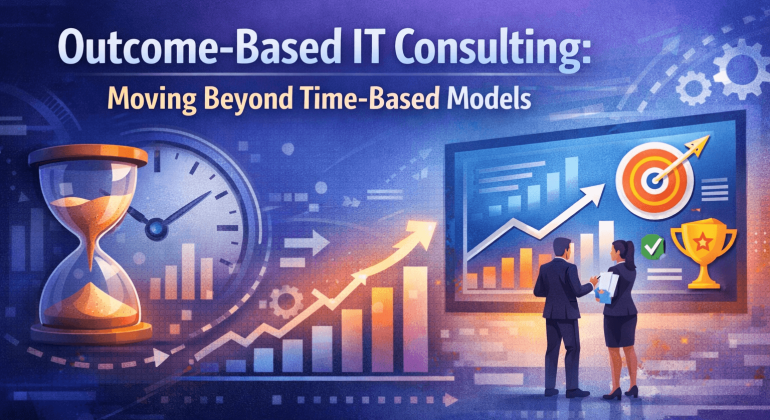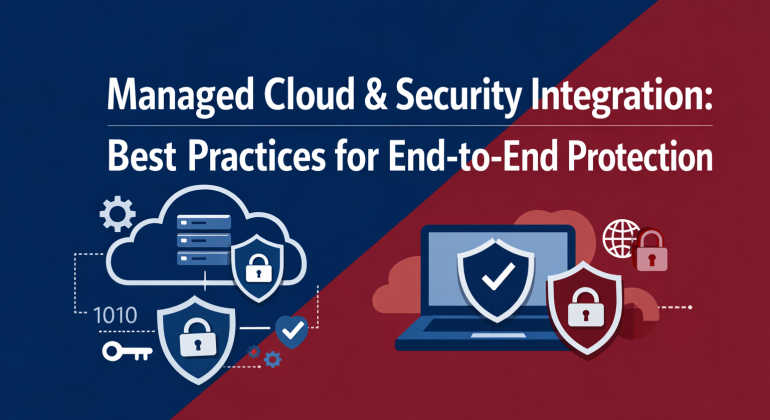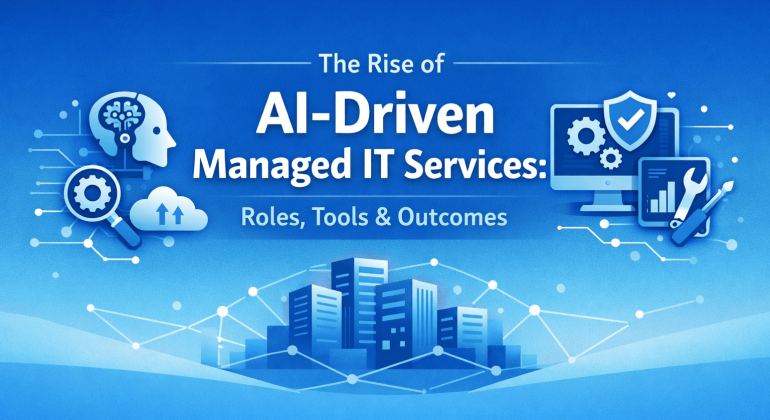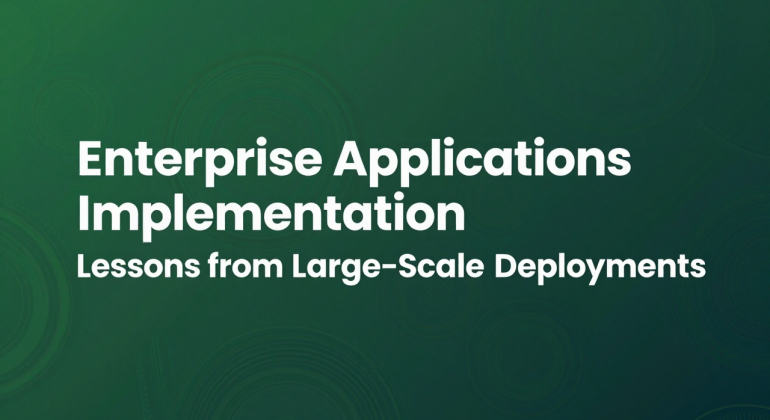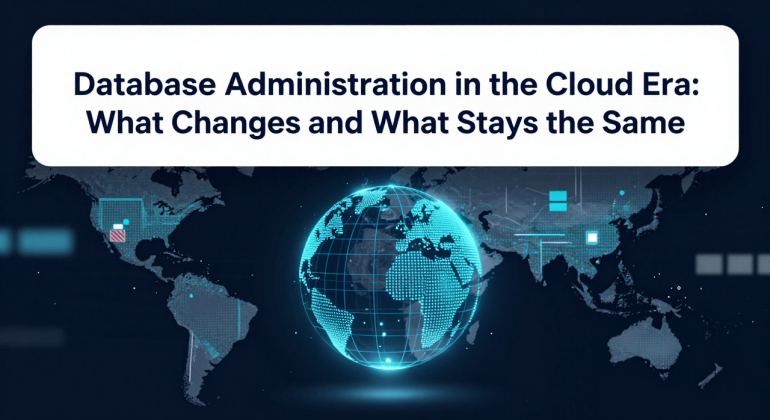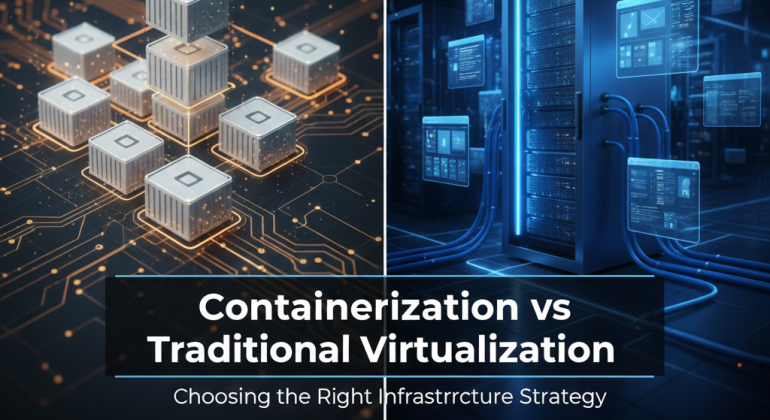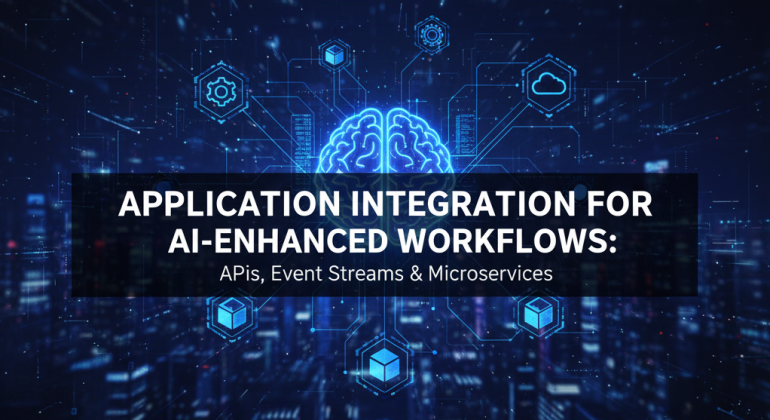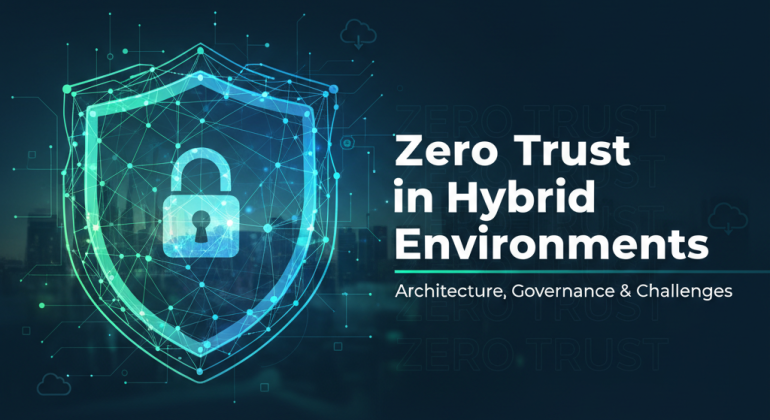Generative AI’s Impact on Infrastructure Projects: Opportunities & Challenges
Infrastructure projects have always been complex undertakings. Whether involving data centers, networks, cloud foundations, or enterprise platforms, these projects require precise planning, coordination across teams, and careful risk management. Traditionally, much of this work has depended on human expertise, static documentation, and manual processes. Generative …
Outcome‑Based IT Consulting: Moving Beyond Time‑Based Models
For decades, IT consulting has largely operated on time-based and effort-based models. Engagements were scoped around billable hours, resource counts, or fixed timelines, with success measured by delivery milestones rather than business impact. While this approach provided predictability in contracting, it often failed to align …
Managed Cloud & Security Integration: Best Practices for End‑to‑End Protection
Cloud adoption has fundamentally changed how organizations design, deploy, and operate IT environments. Enterprises now rely on a mix of public cloud, private cloud, on-premise systems, and SaaS platforms to support critical business operations. While this hybrid reality enables agility and scalability, it also introduces …
The Rise of AI‑Driven Managed IT Services: Roles, Tools & Outcomes
Managed IT services were traditionally built around stability and support. Their primary focus was ensuring uptime, resolving incidents, maintaining infrastructure, and meeting service-level agreements. This approach worked well when IT environments were relatively static and predictable. Today, enterprise IT is anything but static. Organizations operate …
Enterprise Applications Implementation: Lessons from Large-Scale Deployments
Rolling out an enterprise application across a whole organization looks exciting on a slide. In reality, it’s messy, political, and often far more complex than the original business case assumed. The good news: most of the pain points are predictable. If you’ve seen a few …
Database Administration in the Cloud Era: What Changes and What Stays the Same
Database administration hasn’t died in the cloud. It’s just moved up the stack. In the cloud era, DBAs are being asked a new question: what actually changes – and what still depends on you, no matter what AWS/Azure/GCP promise in their marketing decks? Here’s a …
Containerization vs Traditional Virtualization: Choosing the Right Infrastructure Strategy
In the modern IT landscape, flexibility, scalability, and speed define success. As enterprises move toward cloud-native architectures and DevOps practices, the way applications are packaged, deployed, and managed has fundamentally changed. For years, virtual machines (VMs) were the gold standard for infrastructure virtualization – isolating …
PMO Services & Agile Governance: Making Large IT Projects Deliver Value Faster
In today’s digital economy, enterprises invest millions in large-scale IT initiatives – modernizing legacy systems, implementing ERP and CRM platforms, migrating to the cloud, or deploying enterprise-wide analytics. Yet, despite the investment, many projects fail to deliver on expectations. Cost overruns, delayed releases, scope creep, …
Application Integration for AI‑Enhanced Workflows: APIs, Event Streams & Microservices
AI is reshaping how organisations automate processes, analyse data, and make decisions. But AI cannot deliver value unless it connects seamlessly with the applications that run the business. CRM, ERP, HR systems, custom apps, cloud platforms, databases – these systems must feed data into AI …
Zero Trust in Hybrid Environments: Architecture, Governance & Challenges
In an era where the digital perimeter has dissolved, the concept of “trust but verify” no longer holds up. With data, users, and applications spread across cloud and on-premise systems, Zero Trust Architecture (ZTA) has become the cornerstone of modern cybersecurity – especially in hybrid …
